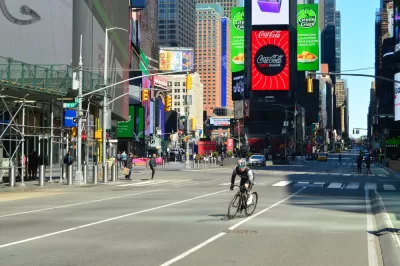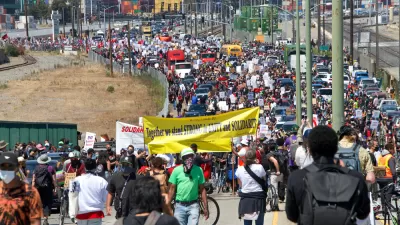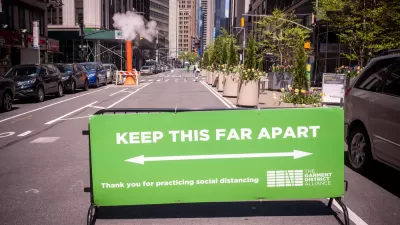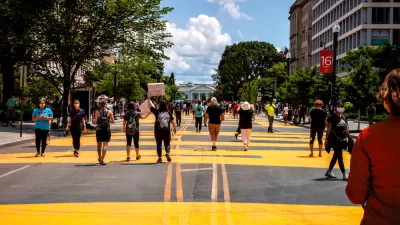After three months of study and analysis, NACTO is providing authoritative guidance on new ways of thinking about rights of way now that the coronavirus has changed the way we live and work in cities.

The National Association of City Transportation Officials (NACTO) released a new guide to street design for the ongoing pandemic and the future recovery.
The "Streets for Pandemic Response and Recovery" report showcases specific design and management tools "to keep essential workers and goods moving, provide safe access to grocery stores and other essential businesses, and ensure that people have safe space for social/physical distancing while getting outside," according to NACTO.
The report includes descriptions of emerging practices from around the world as well as implementation resources for communities. The following street features are addressed specifically in the report:
- Lanes for Biking & Rolling
- Sidewalk Extensions
- Transit Lanes
- Slow Streets
- Pick-Up & Delivery Zones
- Outdoor Dining
- Markets
An article by Kea Wilson provides additional background on how NACTO created the report, and shares insights into a few of the larger themes present in the report, liking designing for equity, the need for flexibility in design response, the post-pandemic sidewalk, and the need to balance outdoor restaurant space with space for pedestrians. Wilson wrote a separate article to address that last point more specifically, and in greater detail.
FULL STORY: Streets for Pandemic Response and Recovery

Maui's Vacation Rental Debate Turns Ugly
Verbal attacks, misinformation campaigns and fistfights plague a high-stakes debate to convert thousands of vacation rentals into long-term housing.

Planetizen Federal Action Tracker
A weekly monitor of how Trump’s orders and actions are impacting planners and planning in America.

In Urban Planning, AI Prompting Could be the New Design Thinking
Creativity has long been key to great urban design. What if we see AI as our new creative partner?

King County Supportive Housing Program Offers Hope for Unhoused Residents
The county is taking a ‘Housing First’ approach that prioritizes getting people into housing, then offering wraparound supportive services.

Researchers Use AI to Get Clearer Picture of US Housing
Analysts are using artificial intelligence to supercharge their research by allowing them to comb through data faster. Though these AI tools can be error prone, they save time and housing researchers are optimistic about the future.

Making Shared Micromobility More Inclusive
Cities and shared mobility system operators can do more to include people with disabilities in planning and operations, per a new report.
Urban Design for Planners 1: Software Tools
This six-course series explores essential urban design concepts using open source software and equips planners with the tools they need to participate fully in the urban design process.
Planning for Universal Design
Learn the tools for implementing Universal Design in planning regulations.
planning NEXT
Appalachian Highlands Housing Partners
Mpact (founded as Rail~Volution)
City of Camden Redevelopment Agency
City of Astoria
City of Portland
City of Laramie





























